Spruce tips are one of the best wild herbs available to foragers. Literally the young growth on branches of spruce trees, spruce tips aren't an herb in the typical sense, but, they are for all intents and purposes. Here's everything you need to know.
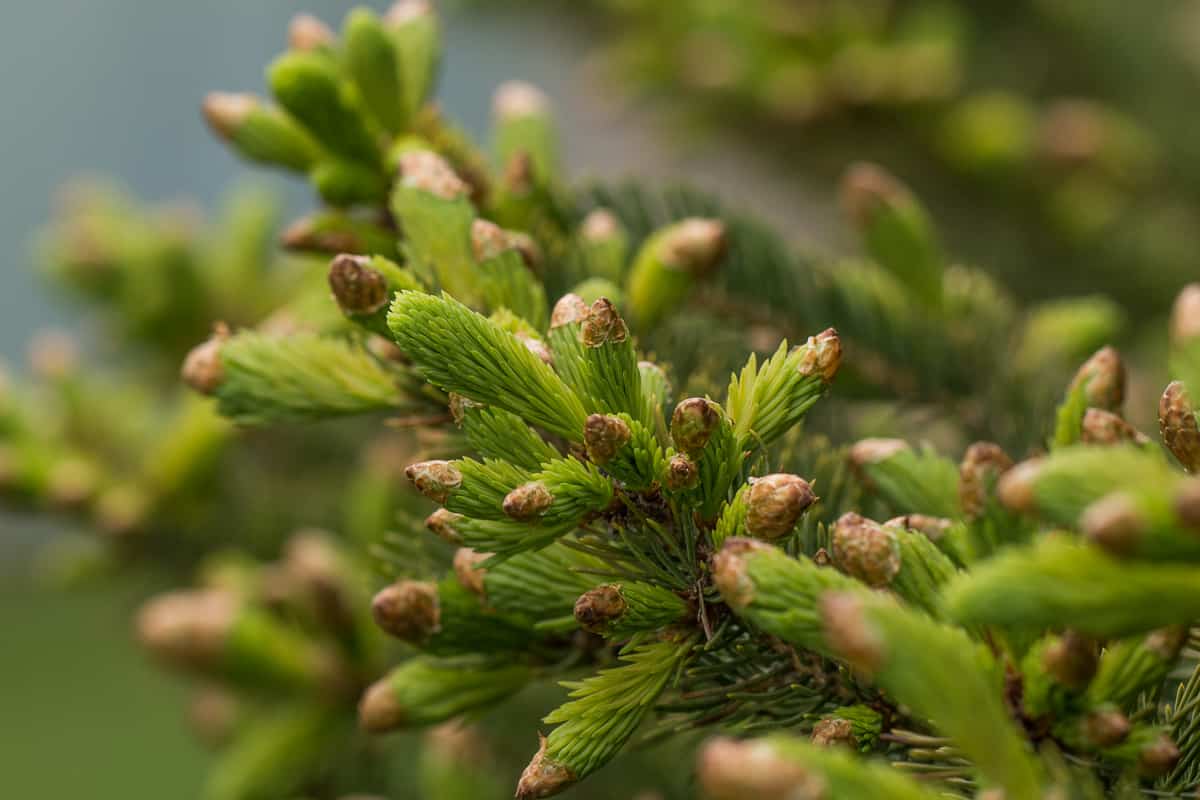
Harvesting Spruce Tips
All spruce species taste different. I worked with some local Amish farmers a few years ago. They'd agreed to sell me spruce tips, but we had to figure out a good tasting species on their property.
Every week for about 3 weeks, they would send me a couple different types of tips from different trees with my vegetable delivery. Eventually we hit on a tasty species before the Spring was officially over, but it took some time.
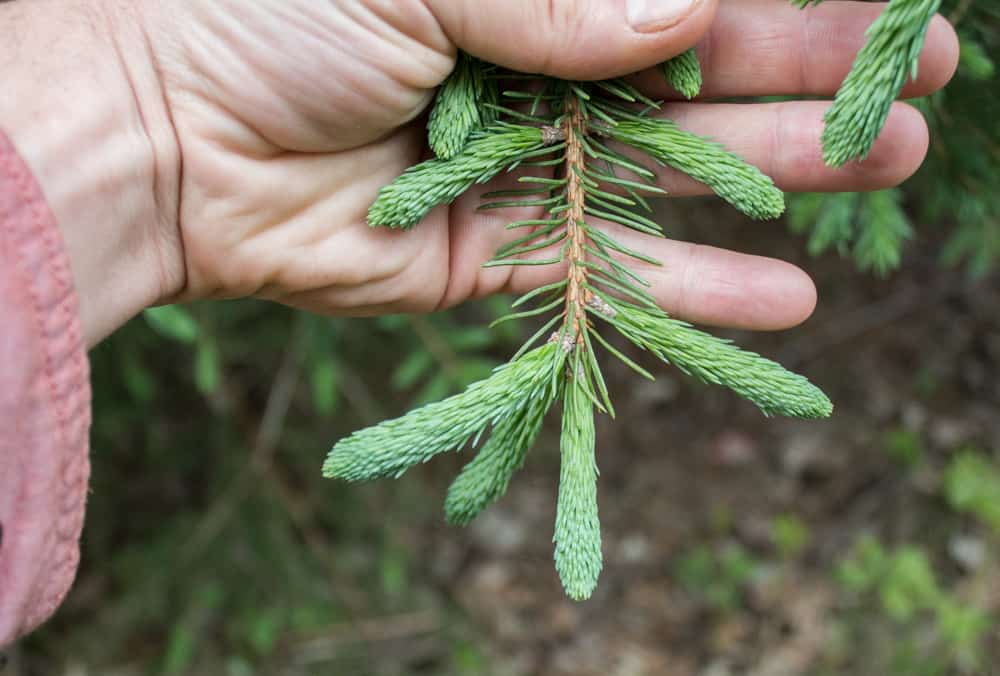
Every young spruce tip I've tasted will have a good flavor, but some have intense bitterness too. The goal is to find spruce tips that have the least amount of bitterness or astringency.
No species of spruce is poisonous though, so what you can do is just go around to different trees and taste them until you find one that tastes good.

You'll want to bring a bottle of water to rinse your mouth out, otherwise after you get a bitter one they might all start to taste the same. When you find a tree that you like the taste of, remember it, and then find other trees that are the same species of spruce.
The only tips I know I really don't like are balsam fir, although their cones are fun and can be used to make an interesting version of Mugolio.
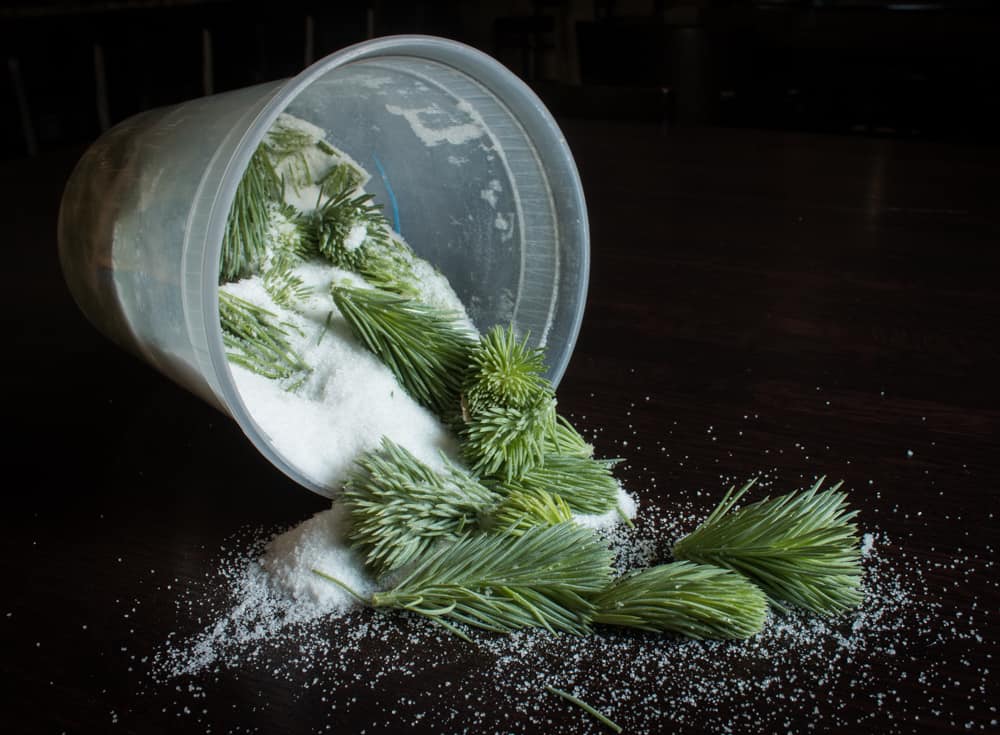
Sustainability
Like with many foraged foods, you need to be careful with how you treat the trees. Here's my rules that I follow when harvesting tips:
- I always pick from elder, mature trees, young trees need time to grow
- I never pick more than 20% of the tips from a single tree
- I never pick tips from the apical meristem, or top of a young tree, which would stunt it's growth
That being said, spruce tips are one of the most easy to harvest and sustainable things you can forage, and the aforementioned details are relatively minor details as far as sustainability goes.
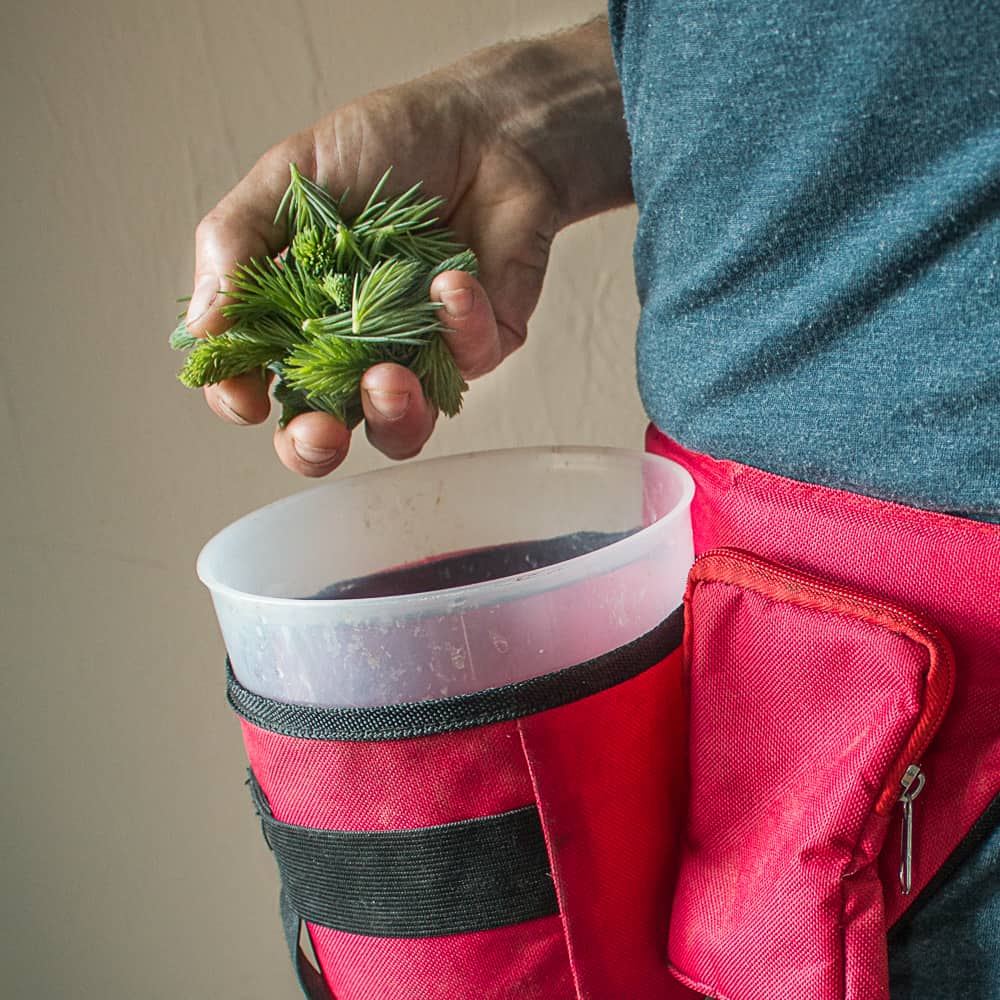
Even if you tried, it would be hard to pick all the tips from a tree, since only the lower hanging branches are accessible most of the time, unless you have a ladder. Also, spruce tips have a strong flavor, and you don't need a lot of them to make things, a handful or two will be enough to serve dessert to 10 or more people.
Spruce Tip Species
As I mentioned, each species of spruce tip is going to taste a little different. Some will have a strong citrus note to them, some will taste a bit bitter.
All the types I've had have a strong piney-citrus note to them, but some have more of the astringency than others. Let your palette be your guide here. By far, my two favorite species to cook with so far are:
- White Spruce (Picea glauca)
- Blue Spruce (Picea pungens)
- Norway Spruce (Picea abies)
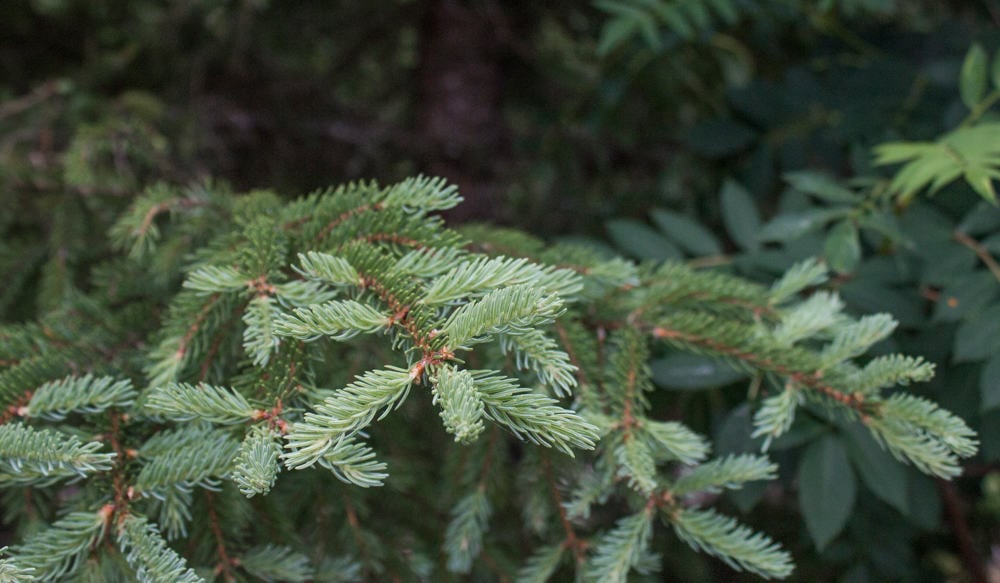
Storing Spruce Tips
Spruce tips have a fantastic shelf life. Picked fresh and cooled, they can last for multiple months under refrigeration at a restaurant, or a few weeks at home.
I store spruce tips in a plastic bag with a damp paper towel to help hold in moisture. If you'll be keeping the tips for a month or longer, make sure to keep an eye on them as they can mold. They can also be frozen, and used for my ice cream and syrup recipe below at the bottom of this post.
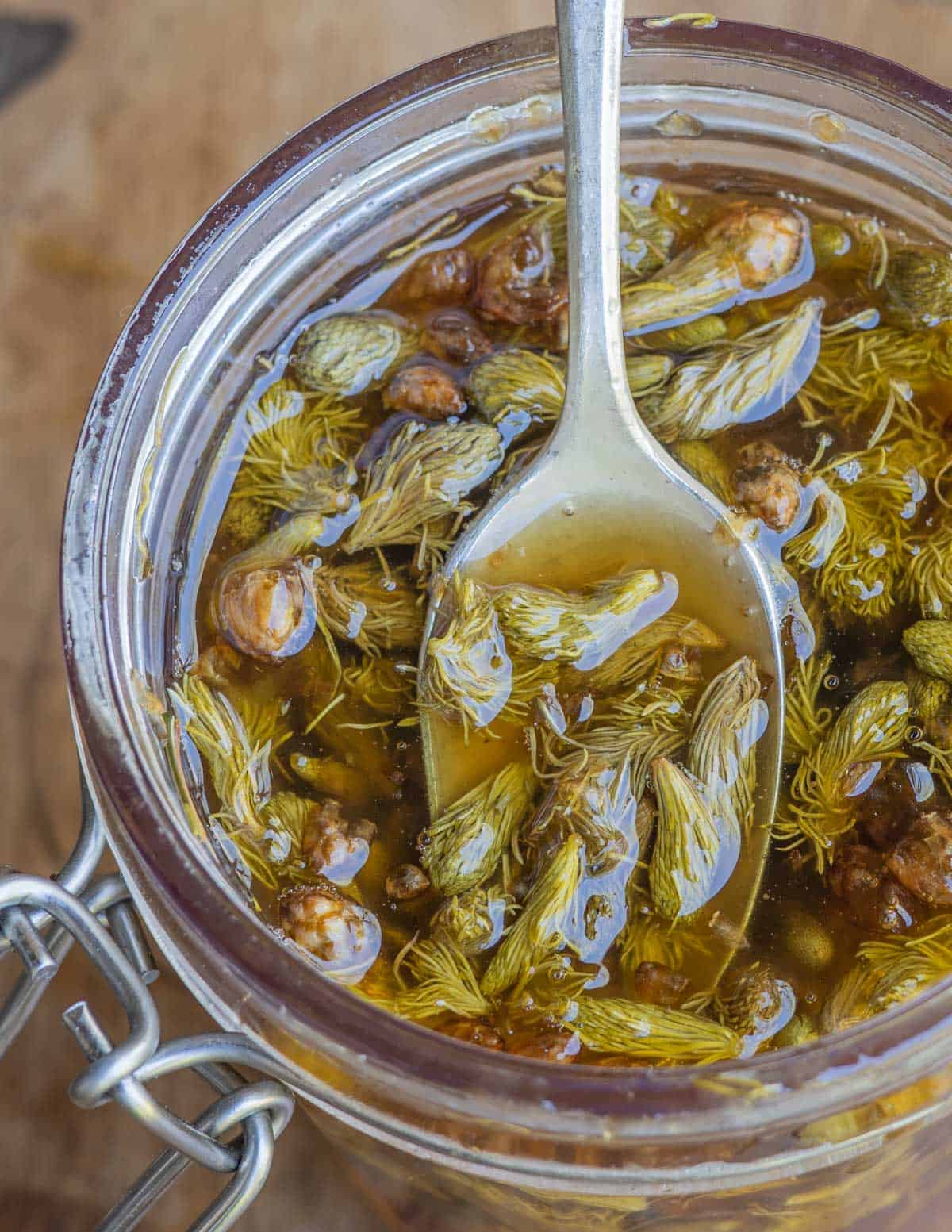
Using Spruce Tips
Here's a few things I find helpful.
- "Cooking" with spruce tips is misleading as I rarely, if ever cook them using heat since they lose their vibrant color. Think of them as an herb you would use raw. When I cook with spruce tips, I usually add them raw to salads or sprinkle over vegetable dishes.
- If I use spruce tips in desserts, they will typically be pureed or in an infusion, and always strained if possible since leftover particles can get bitter.
- Remove the paper covering of any tips before eating, just as you would fiddleheads.
- Sure, people make spruce tip salt, breads and cookies and all kinds of stuff. I've made them too, and there's a reason you don't see recipes for them posted here. You'll have to search for the flavor in most of the finished products that are cooked and most of the time it's barely noticeable.
Spruce Tip Look Alikes
Conifers are some of the safest edibles I know, but when foraging spruce tips, we have to mention that you need to be able to identify common yew (Taxus spp) from spruce tips. It's pretty easy.
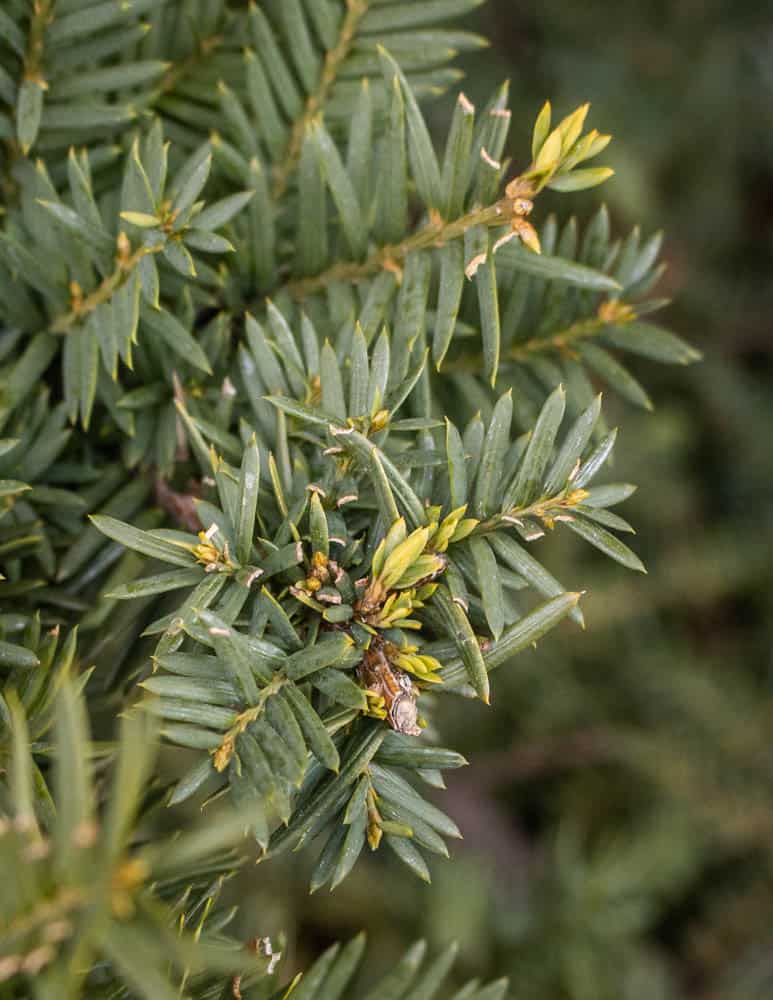
Yew grows typically as a low-growing shrub, while spruce are young growth of tree branches. To me, yew doesn't really resemble spruce tips, but to someone very new to foraging, they could.
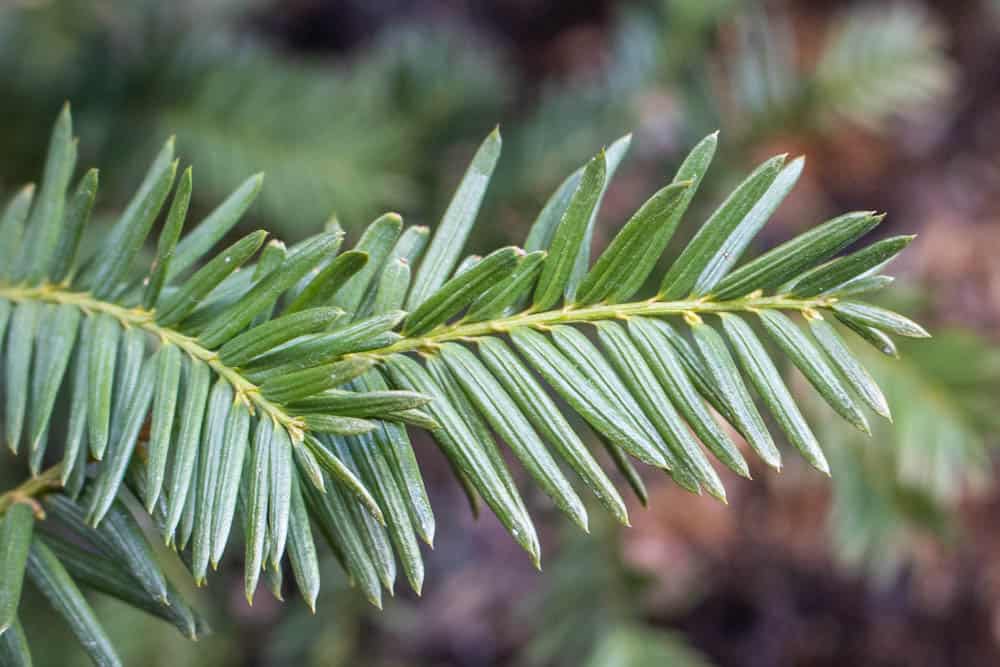
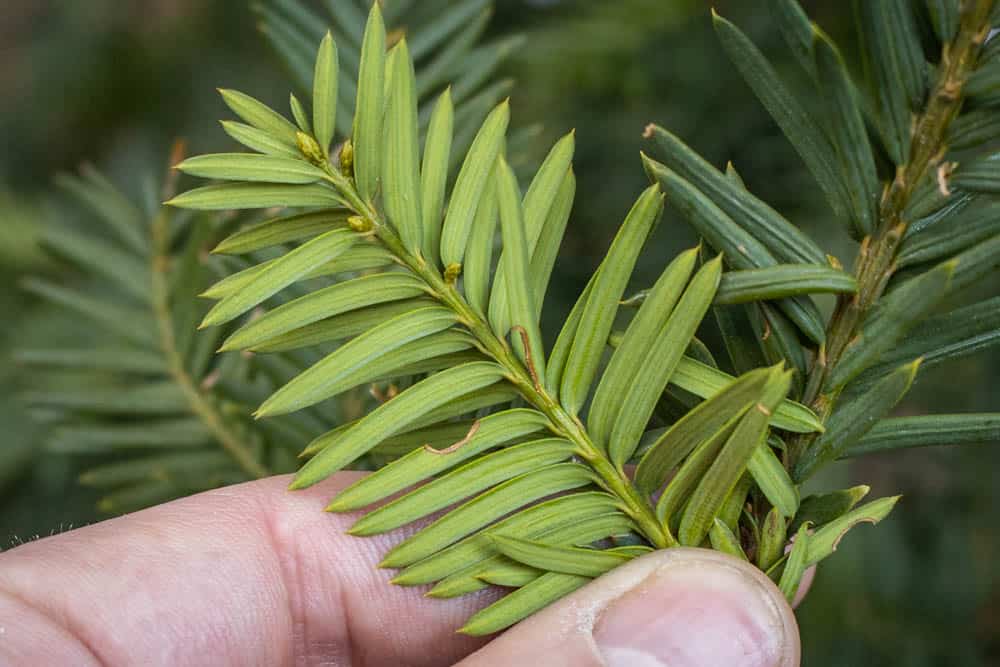
Cooking with Spruce Tips
By themselves, spruce tips taste strong, so a little goes a long way, especially if you have a more aggressive tasting species.
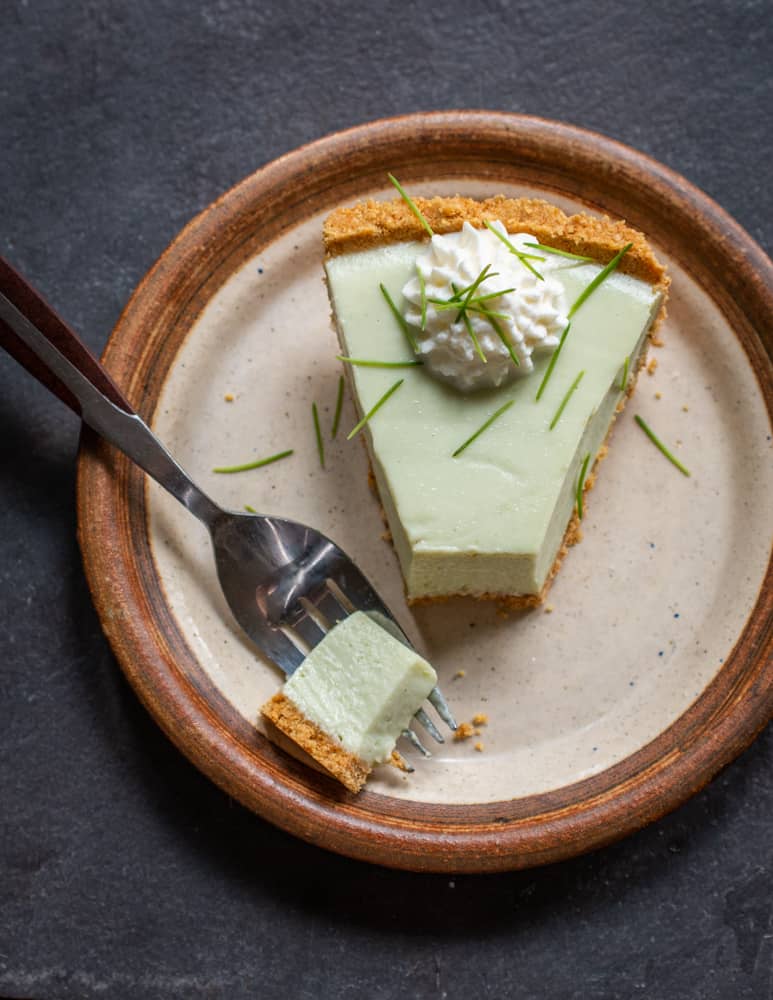
It's helpful to think about the spruce tip flavor as tasting like honeydew melon or mint. From there, I just imagine what a dish would taste like if I added one or both of the two. Here's some examples of flavors spruce likes be paired with.
Savory
- Sweet green vegetables, especially peas, fava beans, green chickpeas, asparagus, etc.
- Radishes, raw lamb, goat, bison, game, etc.
- Organ meats from all above animals, especially heart and liver
- Citrus, and anything flavored like citrus, especially lime
Sweet
- Berries, especially dark ones like blueberries, serviceberries, aronia, cherries, etc.
- White chocolate
- Chocolate, like spruce tip ice cream with chocolate shavings
- Citrus, and anything flavored like citrus--especially lime
- Cream, as in ice cream, panna cotta, mousse, etc
- Nuts, especially creamy ones like pistachios, macadamia, and cashew
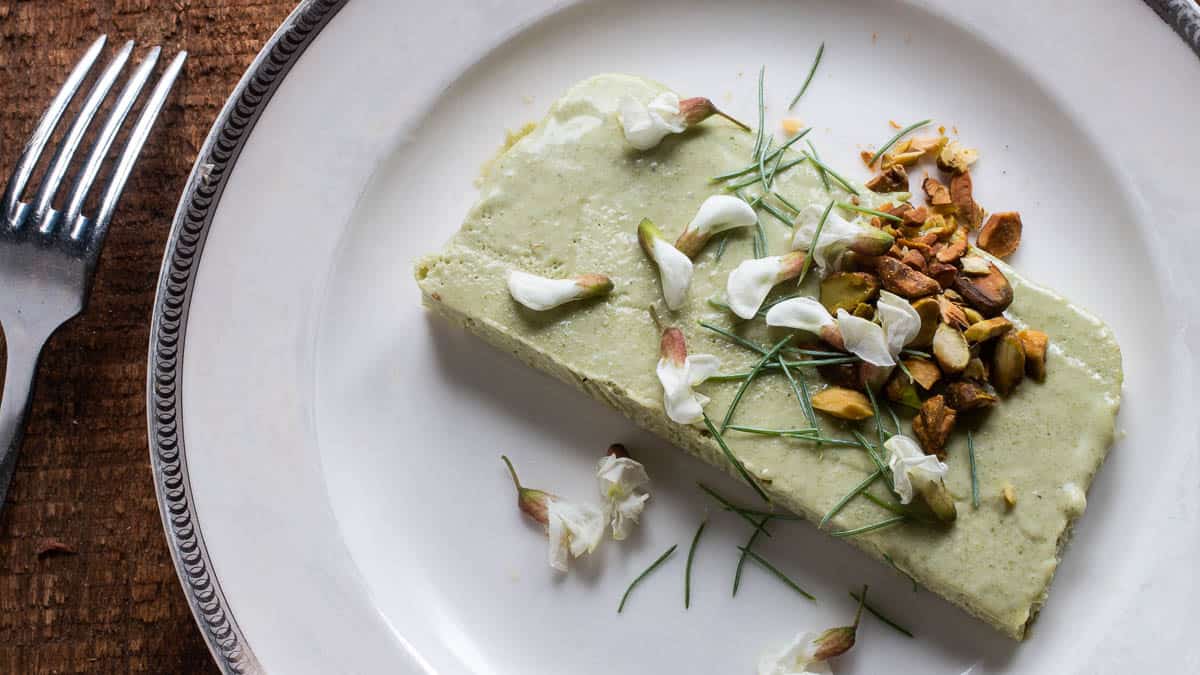
Indigestion from too much Vitamin C
The strong taste of spruce tips should be a deterrent from eating multiple handfuls, but, it is possible for some people to get an upset stomach from eating them, which should due to the fact that spruce tips are naturally high in Vitamin C.
A salad of green vegetables and spruce tips is one of my favorite ways to serve them, but you'll want to serve small amounts of it to start as the spruce tips are raw.
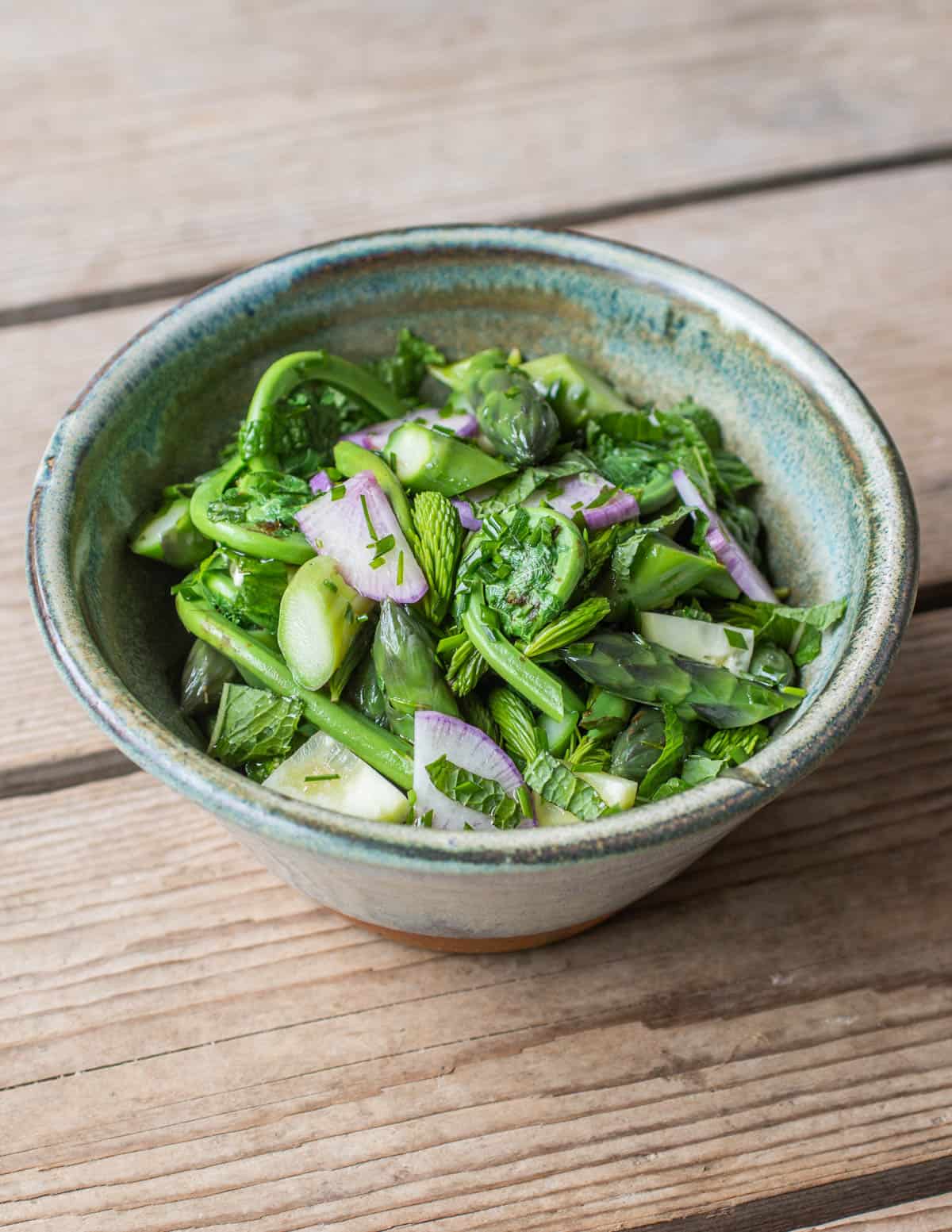
That being said, the tummy rumbles I've been notified and experienced myself are only from consuming raw, un-processed spruce tips straight from the tree, and I have never had a problem serving someone a dessert where the tips are pureed in cream, as they are in just about every dessert I make with them.
Preservation
There's only one way I preserve the tips in their fresh form: frozen. If you strictly want to preserve their flavor, vacuum seal them and freeze, although you can put them in a tightly sealed ziploc too.
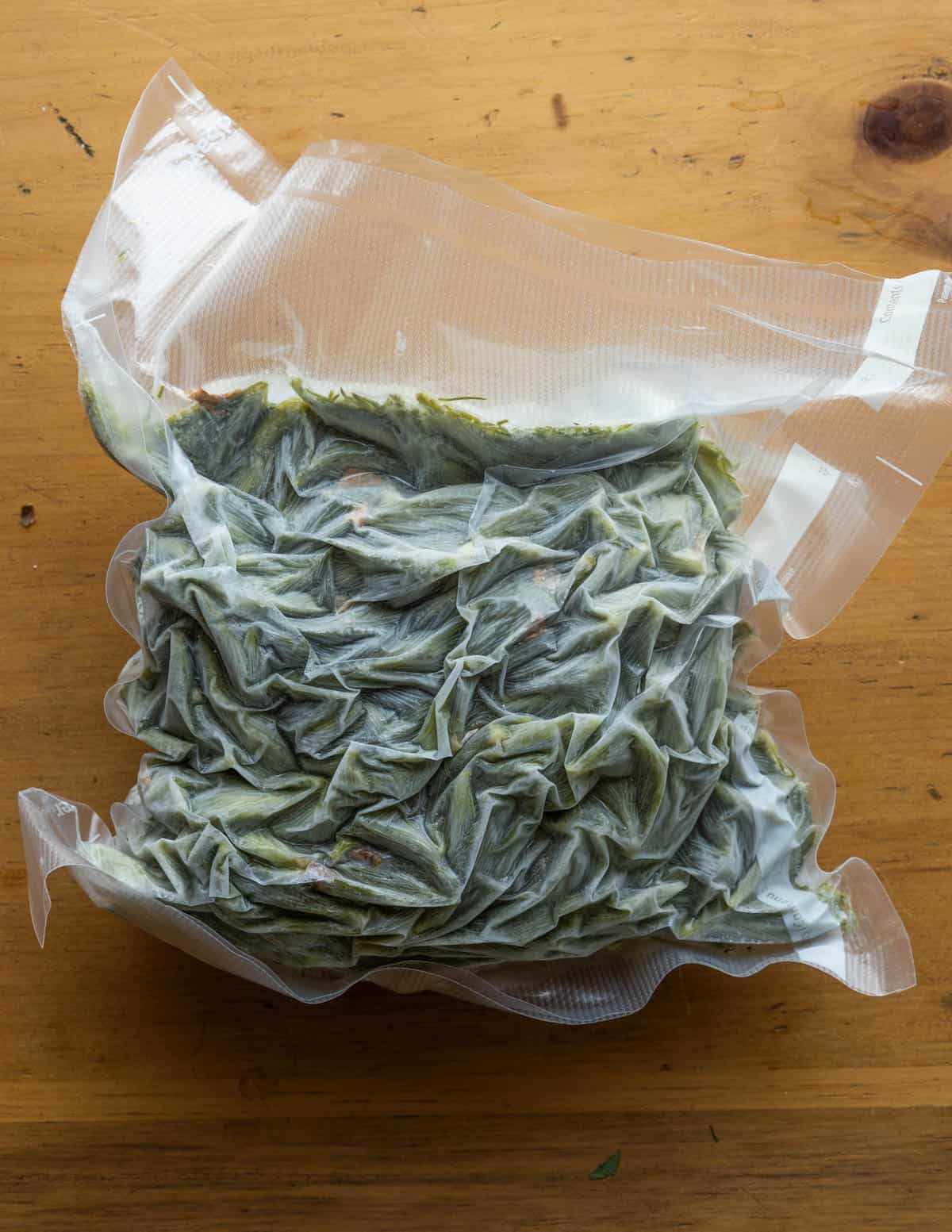
Freezing some is a good investment as the tips are sold wholesale too. If you're looking for spruce tips for sale, the price is usually $ 25-30 / lb through companies like Foods in Season.
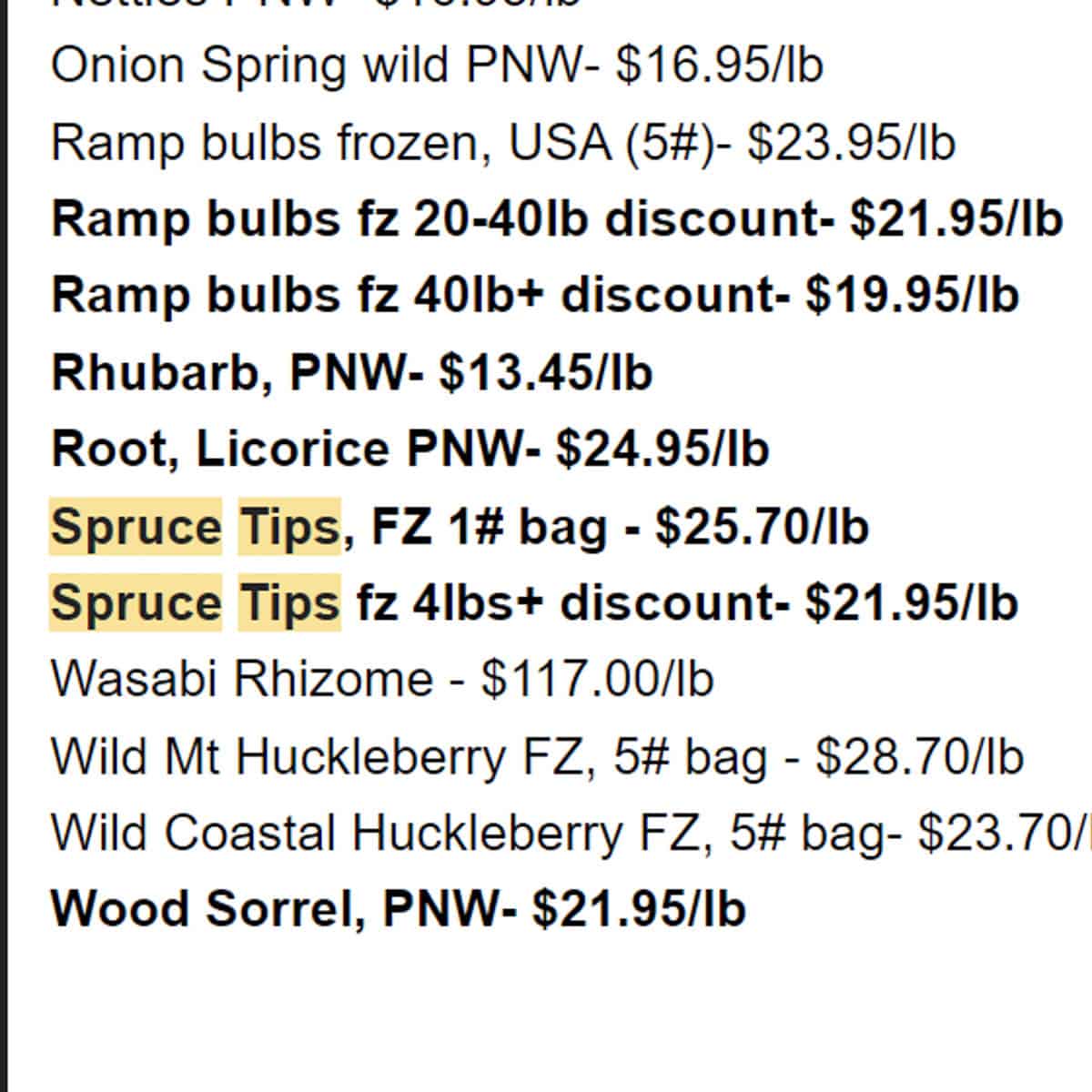
Frozen spruce tips have their limits. They won't have the soft texture of freshly picked tips. If I'm using frozen spruce tips I'm probably making ice cream or syrup, or something that will be pureed-not eaten raw.
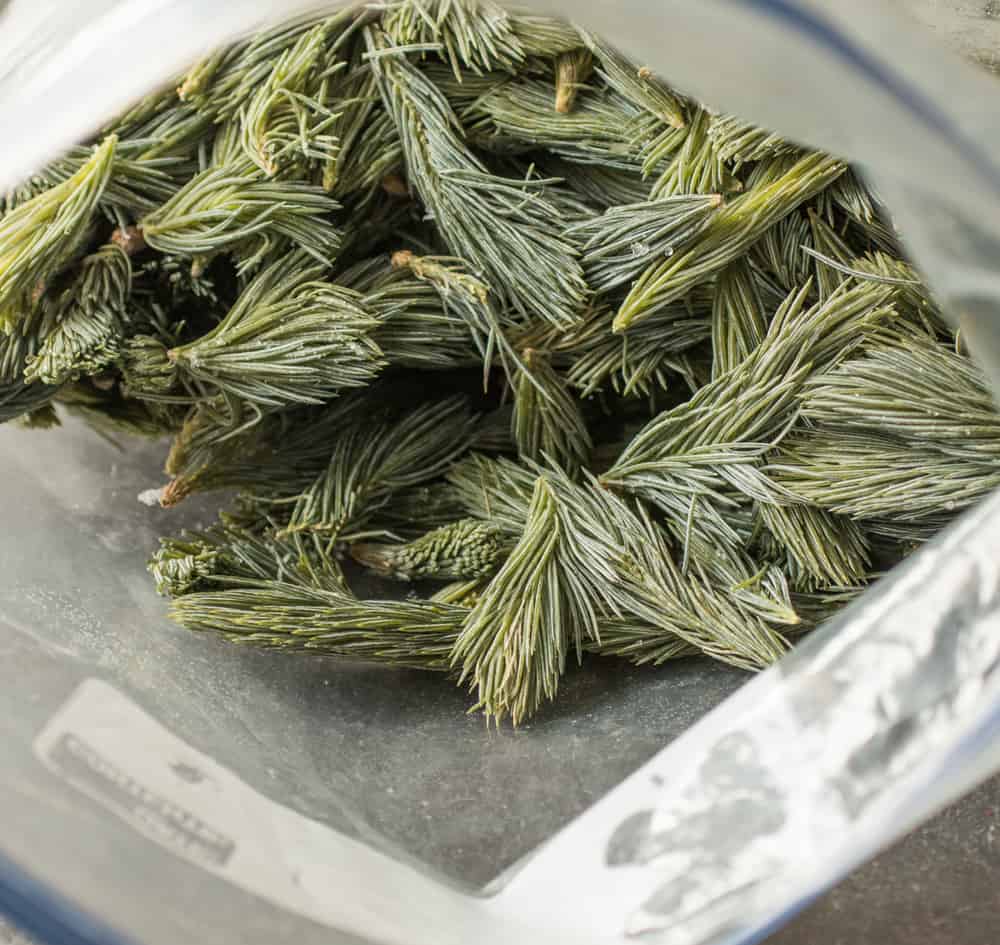
Other Edible Conifer Tips, etc
- Pine trees have edible tips too, and I've eaten many of them. The best thing you can do with these is make them into pine cone syrup.
- Pine cones are also edible if harvested young. Make them into pine cone cider jam (varenye).
- If you want to cook with the mature, long needles, I make them into a brine for spruce ham or chicken.
- Cedar tips aren't that great, but young cedar cones are excellent.
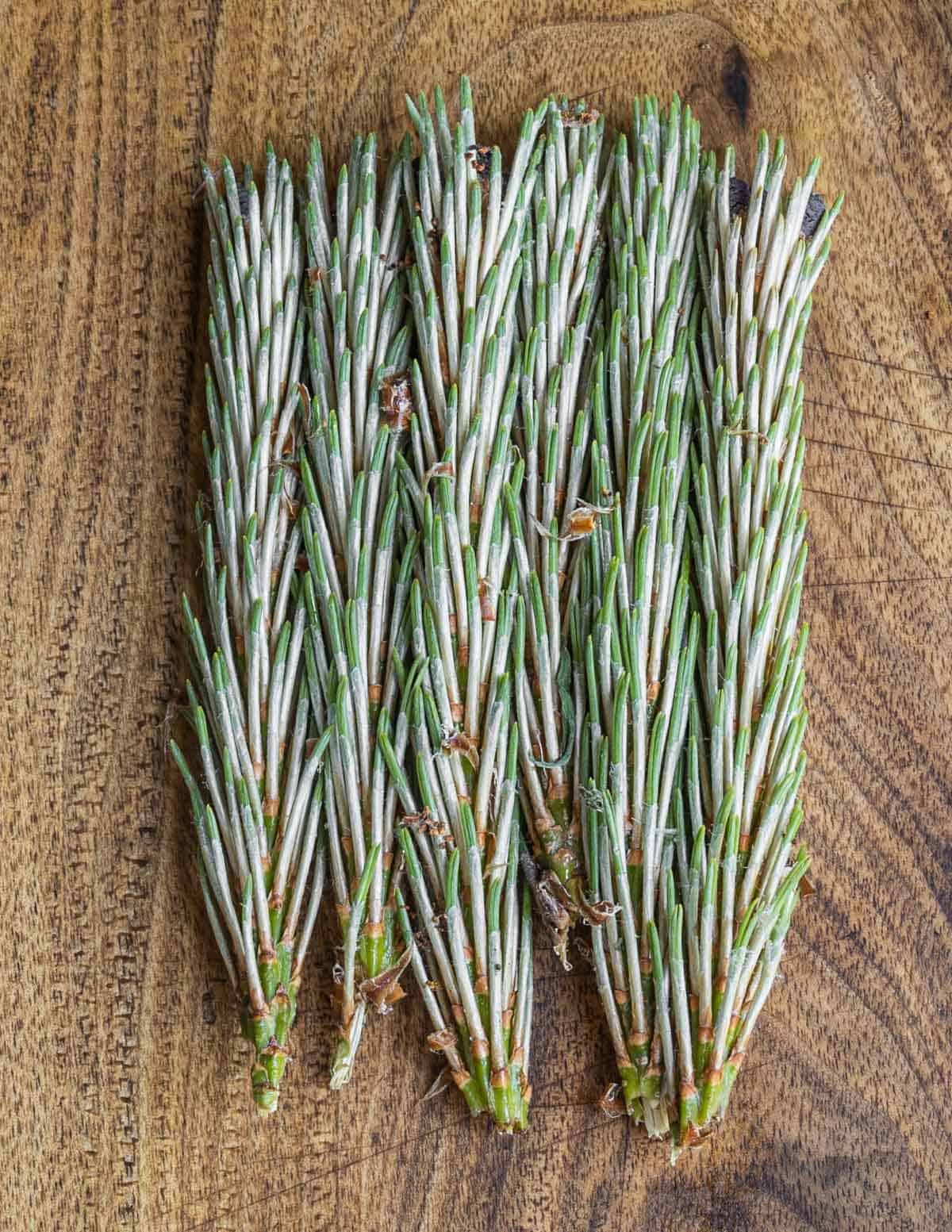
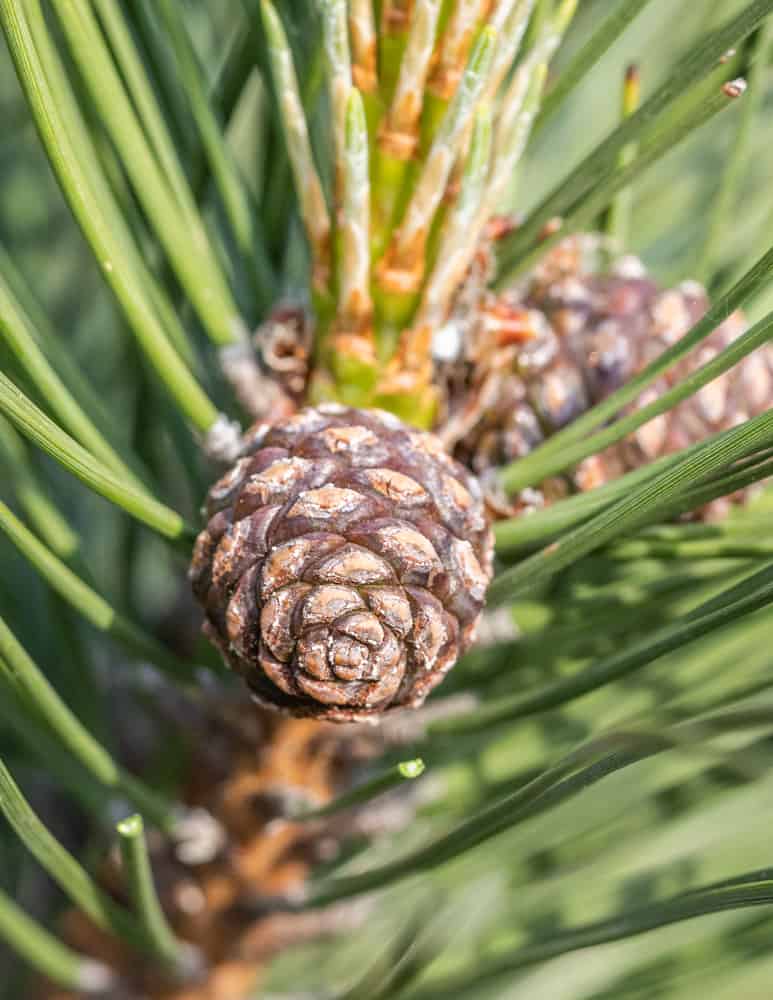
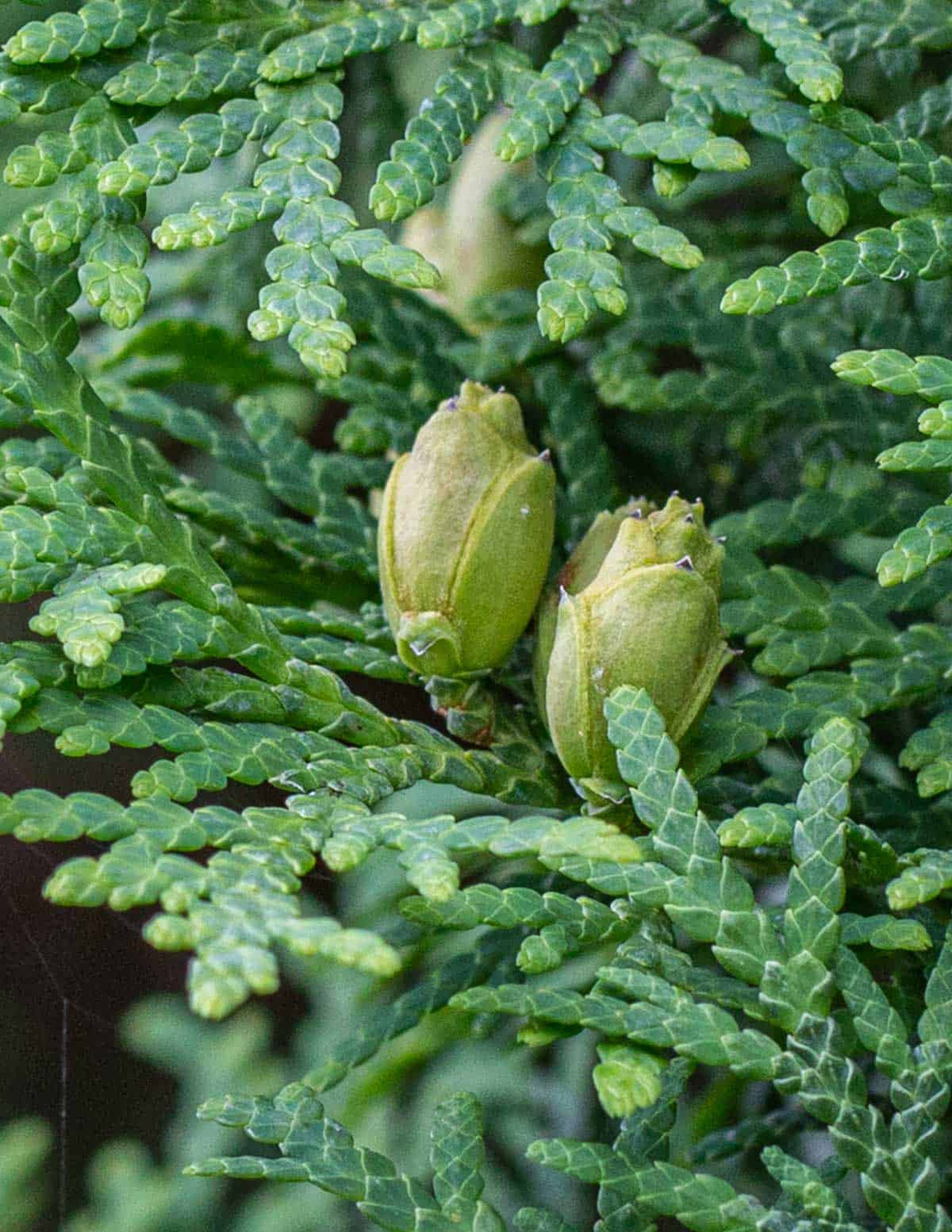
Spruce Tip Recipes
Classic Spruce Tip Syrup
The classic syrup that tastes like spruce and pine trees. Each species will give you a syrup with a unique taste.
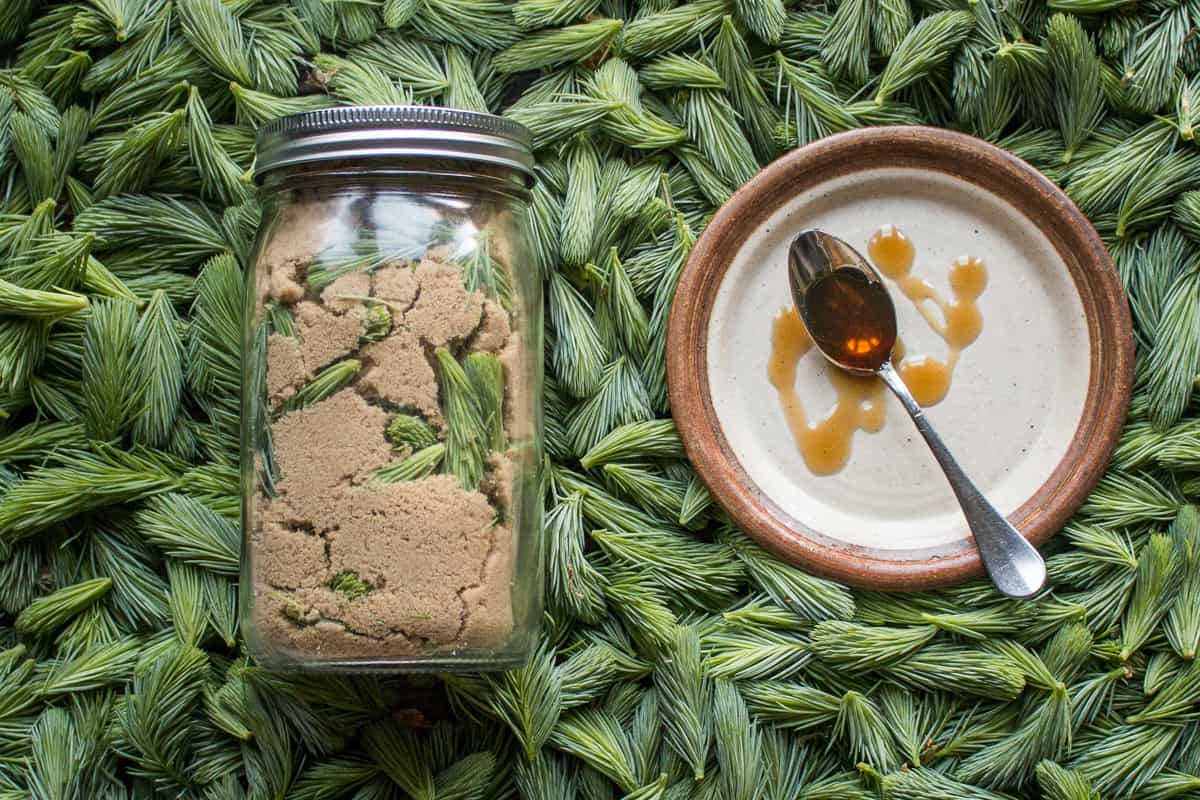
Spruce Tip Ice Cream
The first spruce ice cream on the internet was created on this site and has a borderline cult following.
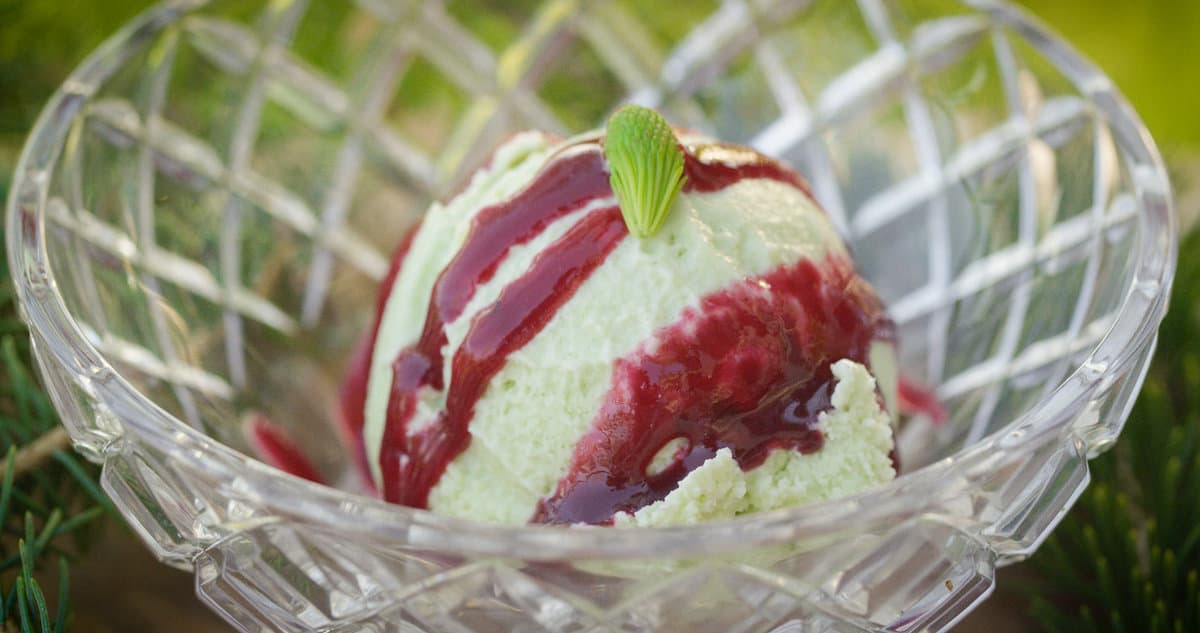
Winter Radish Salad with Spruce Tips and Spring Vegetables
One of my favorite savory ways to use the tips is in a salad of fresh Spring vegetables with herbs.
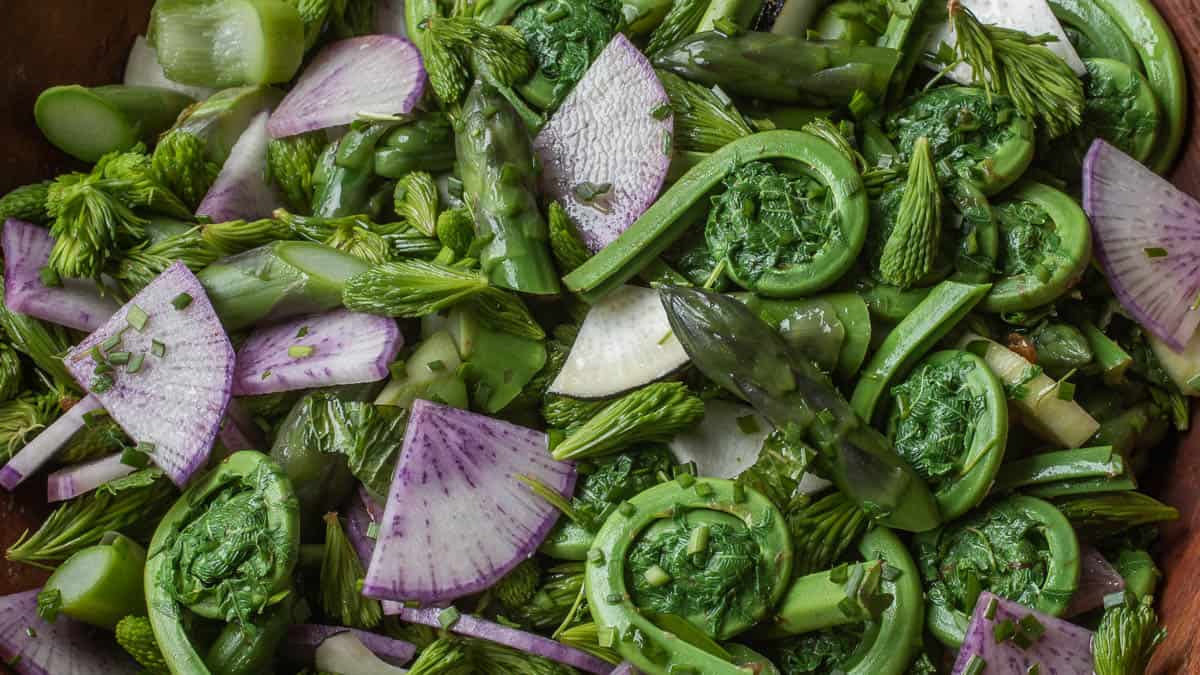
Spruce Posset
A delicate, easy to make custard from the U.K. with the taste of spruce.
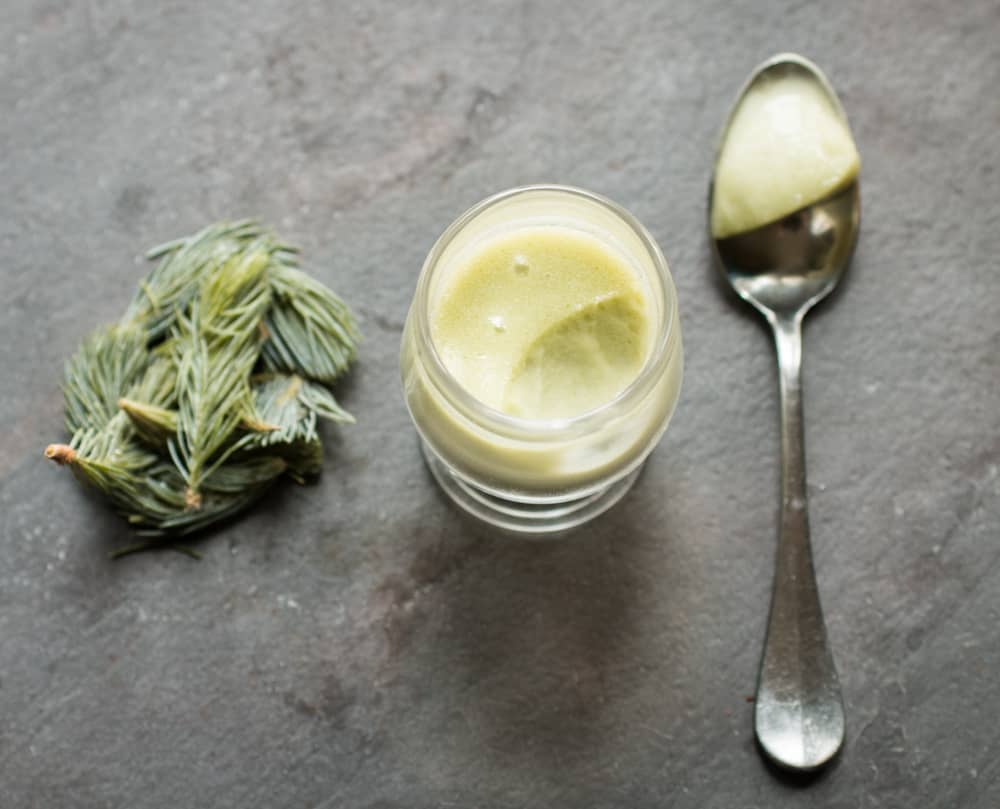
Spruce Tip Panna Cotta
Classic panna cotta flavored with young spruce or pine needles is easy to make.
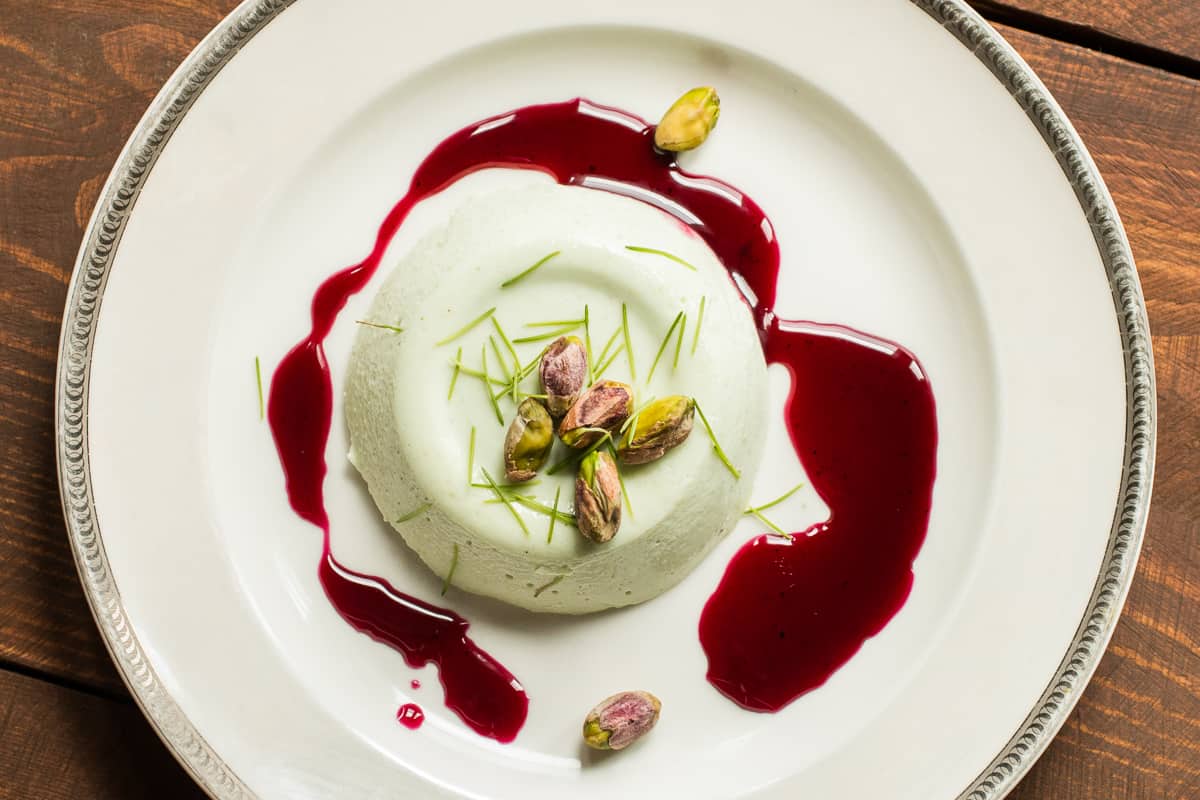
More Spruce Tip Recipes


Z.B.
Have you ever considered taste-testing Picea engelmannii (Engelmann spruce), Picea koraiensis (Korean spruce, not to be confused with Korean pine), Picea omorika (Serbian spruce, not to be confused with Macedonian pine), or Picea rubens (red spruce)? These seem like the most-likely rare species to find planted in Minnesota & Wisconsin. Additionally, have you ever tried hemlock (Tsuga) tips? I've wondered what various Tsuga species' shoots taste like but have never been around healthy trees when their shoots are emerging.
Alan Bergo
I haven't
Carol Radecki
this is the first I have ever heard of spruce tips- found a recipe for homemade lox-
it calls for spruce tips- can I use them fresh off the tree?- also can they be dehydrated- thanks for posting this very informative
Alan Bergo
Hello Carol. Fresh spruce tips won't add much flavor to lox. I've done what you're describing with fresh and mature pine needles and the method I preferred was grinding mature pine needles I'd cut with a scissors with the sugar in a food processor. Neither will add as much flavor as dill for example, but the mature needles will be more noticeable. The mature needles should also be scraped off the fish after curing, but fresh spruce tips could be minced and packed on after wiping off the cure, then vacuum sealed to help them hold in place, giving it a nice green layer out the outside, although it will lose color over time.
Sama Cunningham
Hi Alan,
Thanks so much for this great post. I was wondering if it is possible, in a pinch, to use mature spruce needles (in this context, it’s in a nocino recipe that calls for spruce tips). Is the flavor of the mature needle too bitter or otherwise different to use as a substitute?
Alan Bergo
Hi Sama. The only recipe I have that uses mature needles is for ham. I don't use them as a substitute for spruce tips as the flavor is slightly different-but not necessarily bad.
Sama Cunningham
That's good to know; thanks so much!
Leah Custard
Hi, I harvested spruce tips last year and I have had some sitting on my counter for almost a year now in the brown sugar syrup. There does not appear to be anything nasty growing in the jar and the tips are below the surface of the syrup. Should they still be okay to use? Thanks, Leah
Alan Bergo
Hi Leah, as you're heating it, it's a kill-step. I've forgotten about jars for years without issue, as long as they're not covered in mold you're fine.
Dan
I had to make dietary substitutions but used fat-free lactose-free milk in the ice cream recipe to get a sort of ice milk and the flavor from the fresh spruce tips I collected is excellent. Thank you for posting the recipe. I believe what I collected with Norway spruce.
Alan Bergo
Hey Dan, glad that worked out for you. A good data point there.
Taija
Hello Alain. I've been reading your posts for a long time. You are extremely inspiring. I live in Switzerland. Have you ever juiced the pine tips with a professional juicer? ( not mixing) It could be very interesting... I think I'll try it out this spring...
Alan Bergo
Hi Taija. Unfortunately there's not a lot of water in spruce tips. You could mix them with something juicy like cucumbers though.
Gloria
I just found some spruce tips at my local farmers market and plan to make your great-sounding ice cream. Do you wash and dry the tips before using? I couldn't find any reference to that. Maybe I just missed it! Also, do you ever make a sorbet with them? And could you share any tips and/or a recipe for that? I had a spruce tip and lemon sorbet in Maine recently that was lovely. This would be helpful for friends who are vegan. I just discovered your website and totally love it. Your personal story is very powerful. Thank you for sharing so much of your expertise. My Greek grandmother used to stop the car and forage by the side of the road in New England when I was young which seemed strange and a bit embarrassing back then but, of course, now I know she was onto something!
Alan Bergo
I haven't made spruce sorbet but that's a great idea. The only thing you need to do to clean them is remove any brown paper husk that may be present.
Monika
This is very exciting! My first time to work with spruce buds. (Just one editing comment: you said that you have 2 rules, but listed 3 🙂